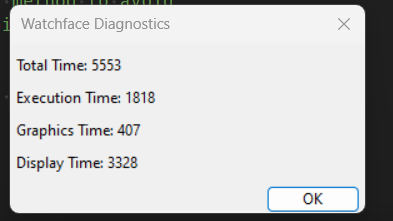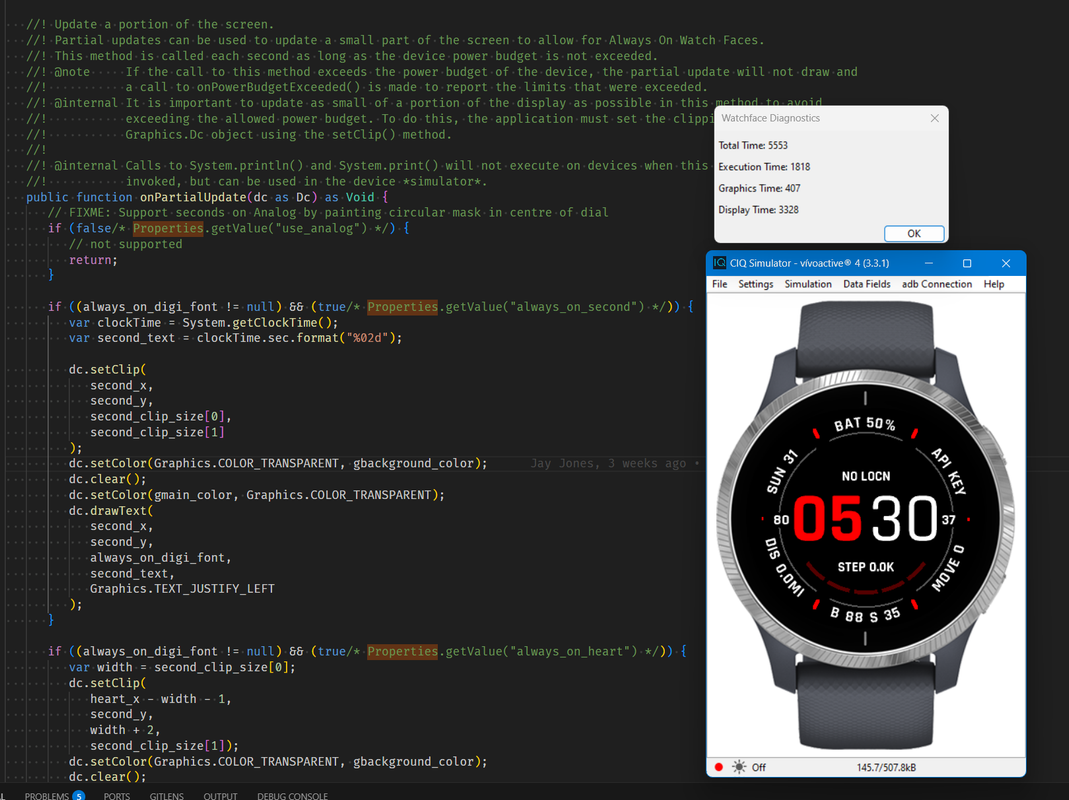I am maintaining the open-source Infocal watchface, and i am not able to get onPartialUpdate to work properly.
Even without any screen writes; GraphicsTime is showing 1,770,000 uS (1.7 seconds)!
Has anyone seen this before? What even is GraphicsTime when you are not doing any screen drawing
This happens in Simulator, and on-Device (so at least they are consistent
You can find my Watchface code here if you want to play around:
https://github.com/blueacorn/Infocal
Thanks in advance,
Jay :)





